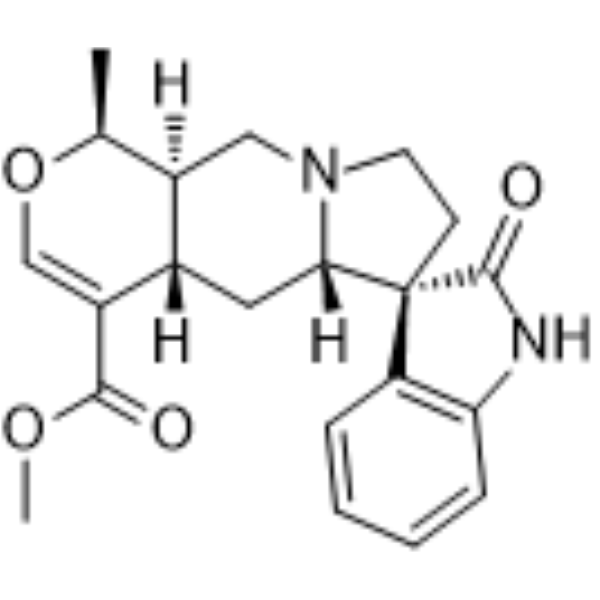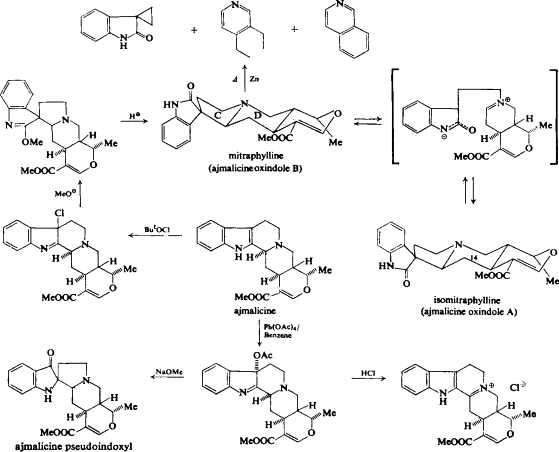In the ever-evolving world of herbal medicine, Mitraphylline emerges as a compound of significant interest due to its potential therapeutic properties. Derived from the Uncaria tomentosa plant, commonly known as cat’s claw, Mitraphylline has been traditionally used in South American medicine for centuries. However, its modern applications in herbal medicine are expanding, as research continues to uncover its range of benefits.
Exploring the Roots: Mitraphylline’s Herbal Origin
Mitraphylline is an oxindole alkaloid found predominantly in the bark and roots of the Uncaria tomentosa plant. This vine is native to the Amazon rainforest and other tropical areas of South and Central America. Indigenous communities have historically used cat’s claw for its anti-inflammatory, immune-boosting, and antiviral properties. Today, these traditional uses are being investigated in a modern context, with Mitraphylline as a focal point.
The Scientific Backdrop of Mitraphylline Uses
Current research into Mitraphylline has revealed a promising array of uses in the realm of modern medicine. The alkaloid has been studied for its anti-inflammatory properties, which are among its most potent benefits. These properties make Mitraphylline a candidate for the treatment of inflammatory disorders such as arthritis and gastritis. Furthermore, preliminary studies suggest that it may have applications in the management of autoimmune diseases by modulating the immune system’s response.
Delving into Mitraphylline Benefits for Chronic Conditions
Beyond its anti-inflammatory effects, Mitraphylline is being explored for its potential in treating a variety of chronic conditions. It has shown promise in laboratory studies for its anticancer properties, particularly in its ability to inhibit the growth of certain tumor cells. This is a significant area of interest, as it opens up possibilities for Mitraphylline to be used as a complementary therapy in cancer treatment, aiming to reduce the side effects of conventional treatments while enhancing their efficacy.
Cardiovascular Health and Mitraphylline: A New Frontier
Another intriguing aspect of Mitraphylline’s application in modern medicine is its potential impact on cardiovascular health. Research indicates that Mitraphylline may help reduce blood pressure and cholesterol levels, key factors in the prevention and management of heart disease. These effects are thought to be mediated through its antioxidant properties, which help in neutralizing harmful free radicals in the body.
Mitraphylline’s Role in Mental Health and Neuroprotection
Mental health is another area where Mitraphylline could make significant strides. Its potential neuroprotective properties are being studied with the hope that it could be useful in treating conditions like Alzheimer’s disease and other forms of dementia. The alkaloid may help in protecting nerve cells from damage and improving cognitive functions, offering a beacon of hope for those suffering from these debilitating conditions.
Harnessing the Power of Mitraphylline in Everyday Health Regimens
For those interested in incorporating Mitraphylline into their health regimens, the compound is becoming increasingly available through various formats, including dietary supplements and herbal extracts. Mitraphylline online availability has made it more accessible to a global audience, allowing people worldwide to benefit from its therapeutic properties without having to travel to the Amazon.

Mitraphylline’s Safety Profile and Regulatory Status
While the benefits of Mitraphylline are compelling, it is crucial to consider its safety profile. As with any herbal supplement, the effects of Mitraphylline can vary from person to person. It is generally considered safe when used in moderation and under the guidance of a healthcare professional. However, potential interactions with other medications and side effects necessitate thorough research and consultation before incorporating it into a health routine.
Economic and Environmental Implications of Mitraphylline Harvesting
The increasing demand for Mitraphylline has economic and environmental implications. Sustainable harvesting practices are essential to ensure that the benefits of this remarkable alkaloid can be enjoyed without depleting natural resources or harming the ecosystems where Uncaria tomentosa grows. Additionally, the growth in the Mitraphylline market can boost local economies in South America, providing jobs and fostering community development.
The Future of Mitraphylline in Integrative Medicine
Looking forward, Mitraphylline holds significant potential in the field of integrative medicine. As researchers continue to unravel its full spectrum of therapeutic effects, it is likely that its use in clinical settings will expand. This will not only enhance the options available for patients but also reinforce the importance of herbal medicine as a vital component of holistic health care.
Final Thoughts:
In conclusion, Mitraphylline represents a bridge between ancient herbal practices and modern medical applications. Its diverse range of uses and benefits, from anti-inflammatory and anticancer properties to potential impacts on mental and cardiovascular health, highlights its importance in the future of herbal medicine. As its availability online increases, so does the opportunity for individuals to access this powerful herbal compound, promising a healthier future influenced by the natural world.
Discover the potent benefits of Mitraphylline with NanoHempTechLabs! Our premium range of Mitraphylline products, derived from sustainably harvested Uncaria tomentosa, offers unparalleled quality and efficacy. Whether you’re seeking to enhance cardiovascular health, support mental well-being, or strengthen immune responses, our products are designed to meet your needs. Experience the transformative power of a trusted herbal solution. Don’t miss out on the opportunity to elevate your health regimen. Visit our website today and schedule a call with one of our experts to learn more about our wholesale options and how they can benefit your business. Act now and embrace wellness with NanoHempTechLabs!
Reference:
- Kośmider, A., Czepielewska, E., Kuraś, M., Gulewicz, K., Pietrzak, W., Nowak, R., … & Nowicka, G. (2017). Uncaria tomentosa leaves decoction modulates differently ros production in cancer and normal cells, and effects cisplatin cytotoxicity. Molecules, 22(4), 620. https://doi.org/10.3390/molecules22040620
- Manda, V., Avula, B., Ali, Z., Khan, I., Walker, L., & Khan, S. (2014). Evaluation of in vitro absorption, distribution, metabolism, and excretion (adme) properties of mitragynine, 7-hydroxymitragynine, and mitraphylline. Planta Medica, 80(07), 568-576. https://doi.org/10.1055/s-0034-1368444
- Tan, M. and An, S. (2020). Neuroprotective potential of the oxindole alkaloids isomitraphylline and mitraphylline in human neuroblastoma sh-sy5y cells. 3 Biotech, 10(12). https://doi.org/10.1007/s13205-020-02535-4





